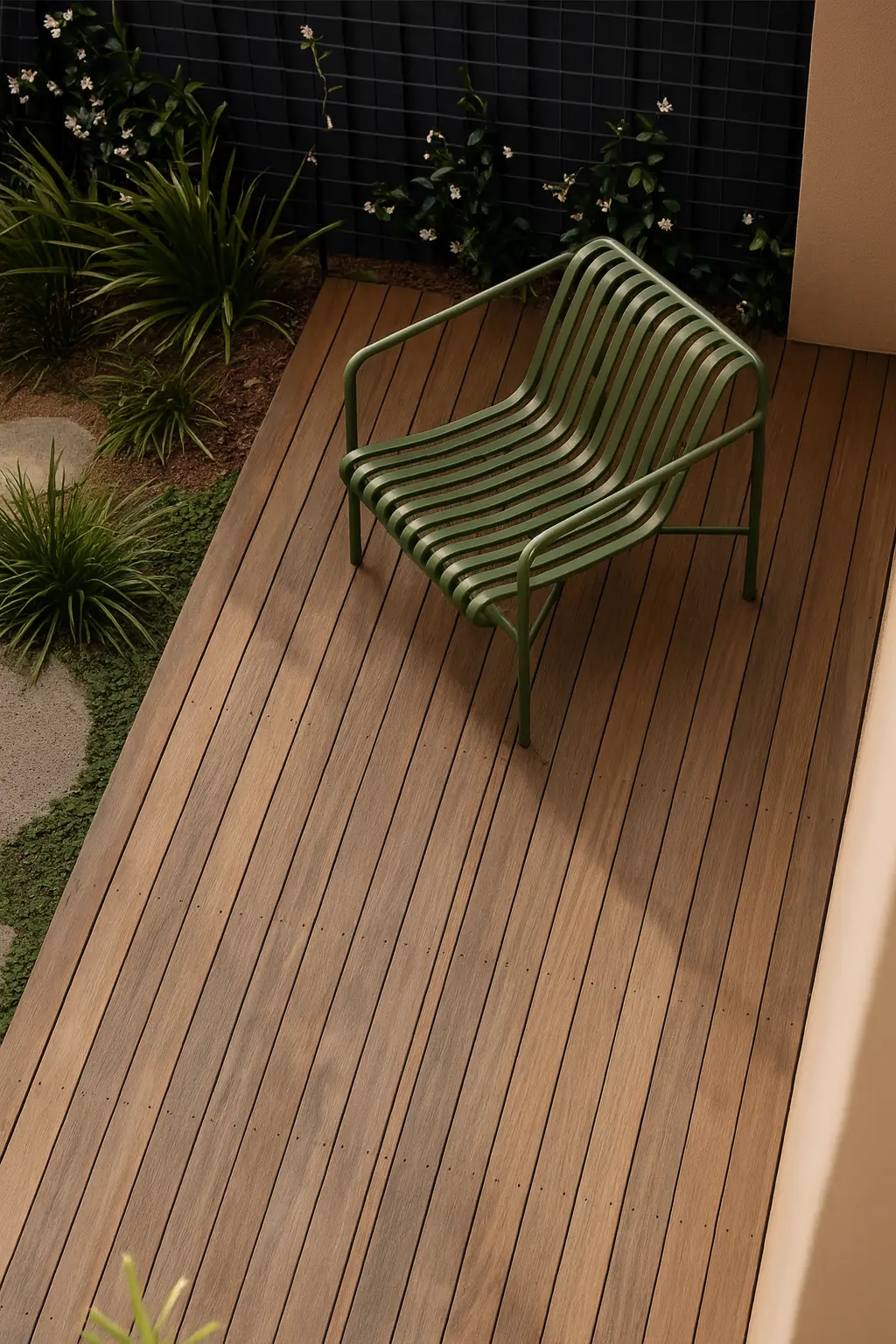
Innovative
and responsible
solutions
Installation on adjustable pedestals, invisible clips or traditional fixing: each solution is tailored to your terrain, wind exposure and desired maintenance, for a durable and worry-free terrace.

Our latest content
Discover the new developments in our company!
The prices shown are indicative only. Every terrace project has its own specific requirements: dimensions, total surface area, site accessibility, location, excavation needs, soil removal volume, and whether machinery can be used. These aspects are analysed during the layout (calpinage) phase. The prices displayed provide a realistic estimate, but finishes, stone sizes, materials or colours may affect the final cost.
FAQ – Wooden Deck
The most common are:
- Exotic woods (Ipé, Cumaru, Padouk): high durability, warm hue, natural resistance.
- Compressed bamboo: eco-friendly, modern, very stable.
- Treated softwood (autoclaved pine, Douglas fir): economical, require more maintenance.
According to the essence and the treatment:
- Exotic wood: 20 to 30 years with maintenance.
- Bamboo: 15 to 25 years.
- Treated softwoods: 10 to 15 years. Regular maintenance (cleaning, protective oil) extends this duration.
On adjustable pedestals: prevents direct contact with the ground and facilitates ventilation.
Visible or hidden fastening (clips): aesthetic and practical choice.
On slab or screed: ideal for elevated terraces or flat roofs.
Full sun exposure: favour dark and dense woods like Ipe, which are more resistant to UV.
Windy area: choose sturdy invisible fixings, avoid overly wide boards that may warp.
- Exotic woods maintain a beautiful brown/red hue but naturally grey over time.
- The bamboo retains a uniform colour for longer.
- An oil or saturator can be applied to slow down greying and nourish the wood.
Composite wood is an interesting, stable, and maintenance-free alternative, but it does not offer the same charm and natural warmth as a solid wood terrace.
Comparison of materials for wooden decks
| Material | Aesthetic | Life span | Interview | Price | Remarks |
|---|---|---|---|---|---|
| Ipé (exotic wood) | Dark brown, homogeneous | ⭐⭐⭐⭐ (25–30 years) | Cleaning + oil (recommended once a year) | ●●● | The most sought after, very stable, ideal for high-end terraces. |
| Cumaru (exotic wood) | Veined brown-red | ⭐⭐⭐⭐ (20–30 years) | Cleaning + oil | ●● | Alternative to Ipé, excellent quality/durability ratio. |
| Padauk (exotic wood) | Bright red → silver grey | ⭐⭐⭐ (20–25 years) | Cleaning + oil | ●●● | Spectacular colour at first, appreciated in contemporary design. |
| Thermally treated bamboo | Uniform brown, modern appearance | ⭐⭐⭐ (15–20 years) | Regular cleaning | ●●● | Eco-friendly material, very stable, suitable for designer terraces. |
| Autoclaved pine (softwood) | Light green/brown | ⭐⭐ (10–15 years) | Treatment + regular maintenance | ● | Cost-effective solution, requires vigilance against moisture and insects. |
| Douglas (untreated softwood) | Rosé, natural appearance | ⭐⭐ (10–12 years) | Requires regular saturator | ● | Local, eco-friendly material, but less durable without treatment. |
| Wood/plastic composite | Wide choice of shades, wood effect | ⭐⭐⭐⭐ (20–25 years) | Very low (simple cleaning) | ●●● | Does not grey, stain-resistant, ideal for low maintenance. |
| Oak or black locust (local) | Light colour, pronounced veining | ⭐⭐⭐ (15–20 years) | Classic interview | ●● | Local alternatives to exotic wood, a good compromise between durability and price. |
Legend :
- Life span: ⭐ to ⭐⭐⭐⭐
- Price: ● (economical) to ●●●● (high-end)